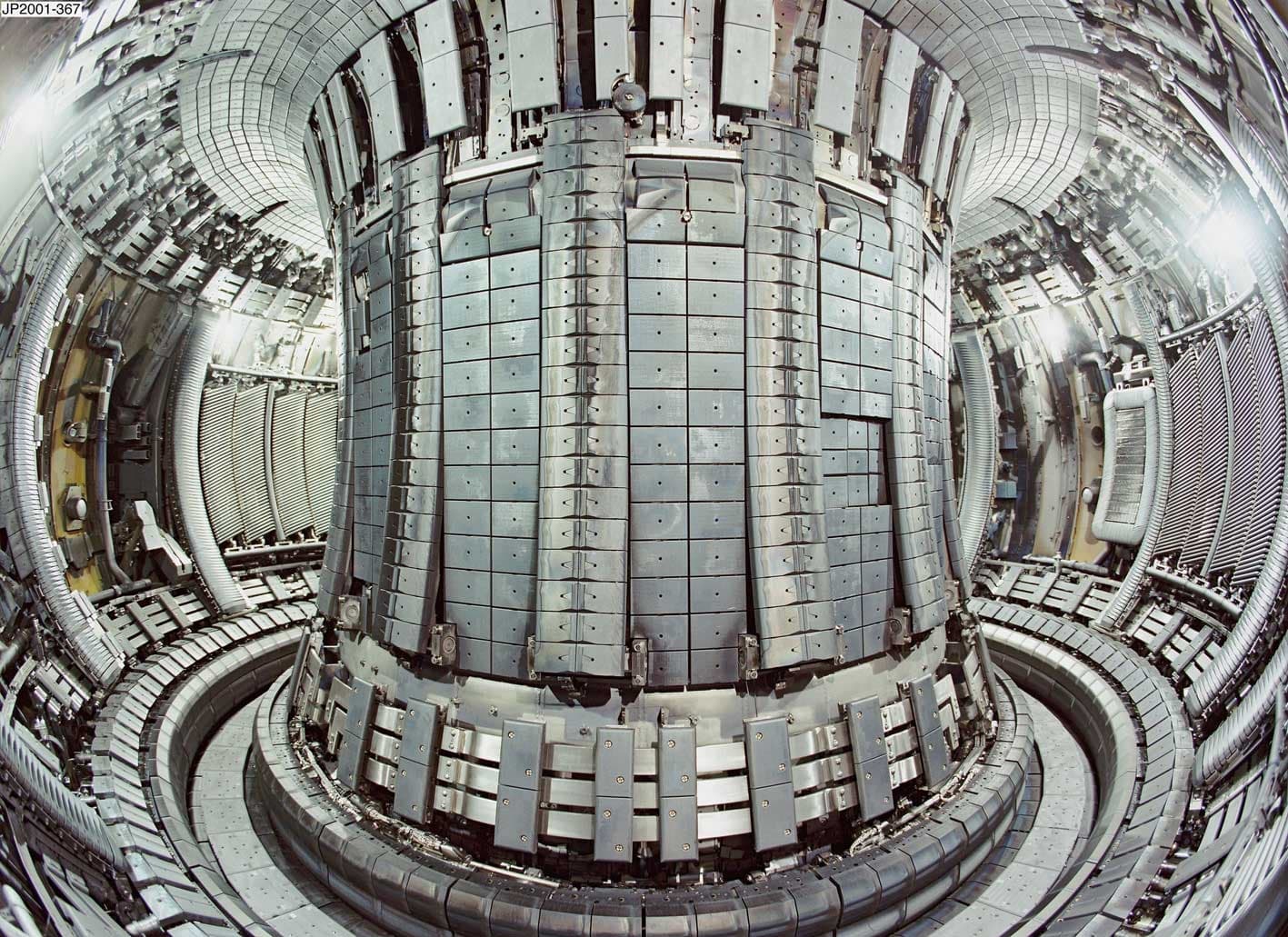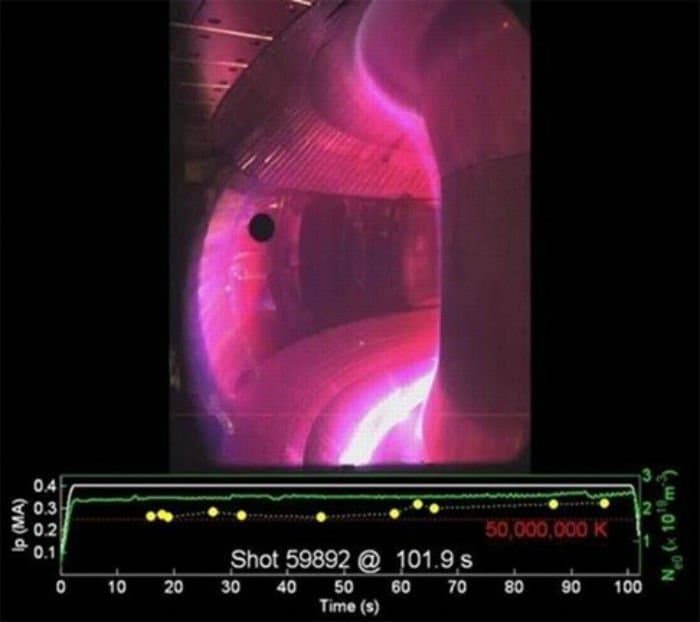Chinese Researchers Take A Step Closer To Sustainable Nuclear Fusion
In a huge step forward towards harnessing nuclear fusion as an energy source, Chinese scientists from the Institute of Physical Science, Hefei have managed to heat hydrogen gas to temperatures three times hotter than the core of the sun, and sustain the gas at this temperature for 102 seconds.

This success in creating and maintaining super-solar temperatures has put China considerably ahead in the fusion energy race, which began in the late twentieth century. Nuclear energy became popular with the world after the invention of the atomic bomb. Although nuclear fission has been mastered and continues to be used as a source of energy, it isn’t particularly safe. It produces harmful radiation, and creates toxic, radio-active waste that is very hard to safely dispose of.
Fusion on the other hand, is completely clean, as it does not produce any harmful waste and would be able to provide a lot more energy than nuclear fission. The downside is that fusion is a lot harder to control than fission. It is famously stated that, “Sustainable nuclear fusion is just thirty years away, and it always will beâ€.
Nuclear fusion combines two atoms of hydrogen to form helium. This requires immense temperature and pressure to create and maintain. Fusion reactors try to create conditions for fusion by superheating plasma up to millions of degrees, under phenomenal pressure. But for continuous fusion to take place, the reaction has to be sustained long enough, and contained using strong magnetic fields.
The Chinese team used an Experimental Advanced Superconducting Tokamak (EAST) reactor, invented by the Soviet Union. The team managed to produce a temperature of 50 million Kelvin, more than three times the presumed 15 million Kelvin at the core of the sun, and sustained it for 102 seconds. Although successful fusion can only be achieved if the Tokamak sustains 100 million degrees Celsius for 1000 seconds, the Chinese team is closer than anyone at this time.

Extensive research is being carried out throughout the world on nuclear fusion, and it might still be a few years before the human race learns to harness the power of the stars. But we can be sure that when we do, it will bring about a technological revolution; perhaps it might be to the modern man what fire was to our ancestors.
Source: <a href="https://www.scmp.com/tech/science-research/article/1909796/new-dawn-chinese-scientists-move-step-closer-creating" target="_blank" rel="nofollow noopener noreferrer">New dawn: Chinese scientists move step closer to creating ‘artificial sun’ in quest for limitless energy via nuclear fusion | South China Morning Post</a>

This success in creating and maintaining super-solar temperatures has put China considerably ahead in the fusion energy race, which began in the late twentieth century. Nuclear energy became popular with the world after the invention of the atomic bomb. Although nuclear fission has been mastered and continues to be used as a source of energy, it isn’t particularly safe. It produces harmful radiation, and creates toxic, radio-active waste that is very hard to safely dispose of.
Fusion on the other hand, is completely clean, as it does not produce any harmful waste and would be able to provide a lot more energy than nuclear fission. The downside is that fusion is a lot harder to control than fission. It is famously stated that, “Sustainable nuclear fusion is just thirty years away, and it always will beâ€.
Nuclear fusion combines two atoms of hydrogen to form helium. This requires immense temperature and pressure to create and maintain. Fusion reactors try to create conditions for fusion by superheating plasma up to millions of degrees, under phenomenal pressure. But for continuous fusion to take place, the reaction has to be sustained long enough, and contained using strong magnetic fields.
The Chinese team used an Experimental Advanced Superconducting Tokamak (EAST) reactor, invented by the Soviet Union. The team managed to produce a temperature of 50 million Kelvin, more than three times the presumed 15 million Kelvin at the core of the sun, and sustained it for 102 seconds. Although successful fusion can only be achieved if the Tokamak sustains 100 million degrees Celsius for 1000 seconds, the Chinese team is closer than anyone at this time.

Extensive research is being carried out throughout the world on nuclear fusion, and it might still be a few years before the human race learns to harness the power of the stars. But we can be sure that when we do, it will bring about a technological revolution; perhaps it might be to the modern man what fire was to our ancestors.
Source: <a href="https://www.scmp.com/tech/science-research/article/1909796/new-dawn-chinese-scientists-move-step-closer-creating" target="_blank" rel="nofollow noopener noreferrer">New dawn: Chinese scientists move step closer to creating ‘artificial sun’ in quest for limitless energy via nuclear fusion | South China Morning Post</a>
0
